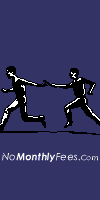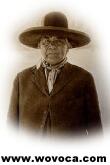|
||||||||||||||||||
Press CTRL+D to bookmark this page! |
||||||||||||||||||
 |
||||||||||||||||||
| Click here for
EarthMotherCrying Wallpaper |
||||||||||||||||||
Massacre at Wounded Knee Story and Index |
||||||||||||||||||
|
||||||||||||||||||
|
||||||||||||||||||
|
|
||||||||||||||||||
|
||||||||||||||||||
|
||||||||||||||||||
|
||||||||||||||||||
1890 Massacre at Wounded Knee
The events at Wounded Knee (South Dakota) on December 29, 1890 cannot be understood unless the previous 400 years of European occupation of the New World are taken into consideration. As Dee Brown has pointed out in Bury My Heart at Wounded Knee (pp. 1-2):
"‘So tractable, so peaceable, are these people,’ Columbus wrote to the King and Queen of Spain [referring to the Tainos on the island of San Salvador, so was named by Columbus], ‘that I swear to your Majesties there is not in the world a better nation. They love their neighbors as themselves, and their discourse is ever sweet and gentle, and accompanied with a smile; and though it is true that they are naked, yet their manners are decorous and praiseworthy.’ Many accounts (from both sides: US Army and Lakota) of this shameful episode exist, and many of those can be found on the Internet. The following is a brief, edited description (from The Great Chiefs volume of Time-Life’s The Old West series) of events. Links to further resources and descriptions follow.
In 1889, rumors of a miraculous Indian redemption began to emerge. In Nevada, during a solar eclipse, a young Paiute mystic byc the name of Wovoca had fallen into trance. When he awoke, he told others that he had been taken into the Spirit World and had received revelations of great future events. The dead would rise. The buffalo would return in the millions. The whites would disappear. The precepts of this new faith called for no fighting, no war, nothing that resembled war, no stealing, no lying, no cruelty. Followers of this faith were expected to perform a dance, one that Wovoka had learned while in the Spirit World. The ritual dance was the essence of simplicity. Each of the worshippers, painted with sacred red pigment, shuffled counterclockwise in a circle, moving slowly at first but picking up tempo while singing songs of resurrection. Many of the participants fell into trance and awoke to tell tales of meeting with dead relatives and seeing hosts of buffalo roaming the Plains. This faith came to be called the Ghost Dance Religion by curious whites because of the emphasis on resurrection and reunion with the dead. Like other peoples who had picked up a new religion, the Sioux added a unique touch of their own -- a small alteration, but one that appeared to taint the basic innocence of the rite. They began dancing in loose shirts, adorned with feathers or other trimmings and decorated with [what the whites saw as] curious cabalistic designs. White men inquired after the meaning and function of these garments, which they called ghost shirts. They were advised that the shirts were sacred and impervious armor against an attacker’s bullets. The reply stirred unease in whites, then outright alarm. What need for armor, unless a mass uprising was being plotted. Agent James McLaughlin reported, "It would seem impossible that any person, no matter how ignorant, could be brought to believe such absurd nonsense, but the infection has been so pernicious that many of our very best Indians appear dazed and undecided when talking of it." McLaughlin also [mistakenly] reported that "the new religion was managed from the beginning, as far as the Standing Rock Sioux were concerned, by Sitting Bull, [Tatanka-Iyotanka (1831-1890)] who... having lost his former influence over the Sioux, planned to import and use it to reestablish himself in the leadership of the people, whom he might then lead in safety in any desperate enterprise which he might direct." From Washington came orders alerting the Army to take up positions to contain and put down any outbreak. The sudden and highly visible presence of troops in turn alarmed the Indians. Distrustful bands, fearing massacre by the whites, left the vicinity of their agencies and headed for the Badlands. The Army, as apprehensive in its way as the Sioux were in theirs, mobilized to round them up. On December 14, 1890, having received word that Sitting Bull was determined to visit the Pine Ridge Agency south of Standing Rock, McLaughlin had him immediately arrested. During the arrest, Sitting Bull protested. His followers, having heard his shout, acted. One of them fired a rifle at one of the arresting officers (a fellow Sioux) named Lt. Bull Head. As the police chief fell, he managed to put a bullet into Sitting Bull. General gunfire erupted, taking the lives of Sitting Bull, six policemen and eight of Sitting Bull’s followers. (Click here for James McLaughlin's account of the arrest.) The killing of the chief exacerbated the turmoil that was already sweeping the reservation lands. Bands of Sioux fled, all frightened, many of them still holding onto the hope of deliverance through the Ghost Dance miracle. Some of Sitting Bull’s followers hurried toward the camp of Big Foot, a Miniconjou Sioux chief. They met up with Big Foot while he and his people were on their way to agency headquarters near Fort Bennett to procure rations. Meanwhile, authorities had decided that Chief Big Foot was a troublemaker who should be taken into custody. When Col. E.V. Sumner intercepted the band, Big Foot gave assurances that their intentions were peaceful and lawful. Sumner questioned his motives for sheltering "hostiles" from Sitting Bull’s camp. Big Foot replied that he had found 38 men and women who were hungry, footsore and nearly naked in midwinter. Anybody with a heart would have done the same thing, he told the colonel. Sumner nevertheless ordered Big Foot’s followers, numbering more than 300, to accompany him to Camp Cheyenne, where they would be kept under watchful eye. They obeyed the orders without protest until they had traveled back to the vicinity of their own village. The Indians then announced that they would not go any farther. Big Foot advised the colonel that they intended to return home and that they had done nothing to justify their removal. But during the night, alarmed by some reports of additional troops that were coming from the east, Big Foot’s people fled toward refuge in the Badlands. Orders came from General Miles to pursue and apprehend the fugitives. Another cavalry unit caught up with them on December 28. Carrying a white flag, Big Foot approached Major Whitside to parley. Whitside demanded surrender, and Big Foot, whose band was in no condition to fight, gave in. The troops hurried the band southwest to Wounded Knee Creek and took up surrounding positions as the Indians set up camp. Four more cavalry troops arrived under the command of Col. James Forsyth, bringing the escort to 470. Big Foot was now ailing with pneumonia, and Col. Forsyth provided him with a camp stove. In the morning, Forsyth prepared to disarm his captives. To secure the field, his troops were disposed on all four sides of the Indian camp, and four rapid-fire Hotchkiss guns were set into place on a low hill overlooking the camp from the north. At about 8 o’clock, the Indian men came out of their tipis and sat in a semicircle in front of the troops. Forsyth issued orders that they should return to the lodges, 20 at a time, and bring out their guns. The first contingent obediently entered the tipis but, after some time, reappeared with only two weapons. Troops around the warriors were moved up within 10 yards; others were detailed to go into the tipis and make a search. The soldiers went at their work with hard-handed zeal, scattering bedclothing, pawing through other property. Women inside the lodges protested loudly. Outside, resentful uneasiness edged into hair-trigger tension. Then a medicine man called Yellow Bird began blowing on an eagle-bone whistle, exhorting them to resist. When the soldiers began to search the warriors themselves, the situation exploded. A young Indian pulled a gun out from under his robe and fired wildly. Instantly, the soldiers retaliated with a point-blank volley which cut down nearly half of the warriors. The rest of them drew concealed weapons and charged the soldiers. Then the Hotchkiss guns on the hill opened up -- on the women and children who had come pouring out of the tipis. Soon many of the tipis were burning, ripped by the explosive shells. A stumbling mass of women and children and a few men bolted into a ravine that led away from the encampment. The soldiers followed them, firing as they went. The Hotchkiss guns were then re-emplaced to sweep the ravine and cut down anything that moved. Big Foot died as he tried to rise from his sickbed. Others managed to run as far as two miles from the camp before dying of their wounds. Twenty-five white men were killed and 39 wounded. Since the besieged Indians had few guns and since the troops were firing from four sides at once, it seemed likely that the soldiers had caused many of their own casualties. The Indian dead numbered about 180. [Note: other reports place this number much higher.] For three days, they were left to lie where they had fallen while a winter blizzard swept over them. A burial party was sent to the scene on New Year’s Day, 1891. One by one the bodies, frozen in the grotesque agonies of death, were dragged from under the snow and heaved into a single pit. Four babies were discovered still alive, wrapped in their dead mothers’ shawls. Most of the other children were dead. "It was a thing to melt the heart of a man if it was of stone," said a member of the burial party, "to see those little children, with their bodies shot to pieces, thrown naked into the pit."
Other background infoTelegrams Sent by Miles at the Beginning of Trouble Reports of the Massacre by General Nelson Miles
Related Books
After
Wounded Knee (Surgeon's Correspondence)
Arrest
Sitting Bull
Bury
My Heart at Wounded Knee
The
Ghost-Dance Religion and the Sioux Outbreak of 1890
The
Ghost-Dance Religion and Wounded Knee
Indian
Givers: How the Indians of
The
Lance and the Shield: Life and Times of Sitting Bull
Last
Days of the Sioux Nation
Lost
Bird of Wounded Knee: Spirit of the Lakota
We
Are a People in This World: Lakota Sioux/Massacre at Wounded Knee
Wounded
Knee: The Death of a Dream
Way
West:Ghost Dance 1877-93 Vol. 4 (1995)
Links to Other SitesBarracks Ballad of Wounded Knee Lakota Accounts of the Massacre at Wounded Knee The Murder of the Wind of Peace
Photographs"Brave" Soldiers of Wounded Knee
|
||||||||||||||||||
|
||||||||||||||||||
|
||||||||||||||||||
Shapeshift to WOVOCA! to view this site's main page |
||||||||||||||||||
|
||||||||||||||||||
|
||||||||||||||||||
|
||||||||||||||||||
|
||||||||||||||||||
|
||||||||||||||||||










![[Image]](pict41.jpg)
![[Image]](pict43.jpg)